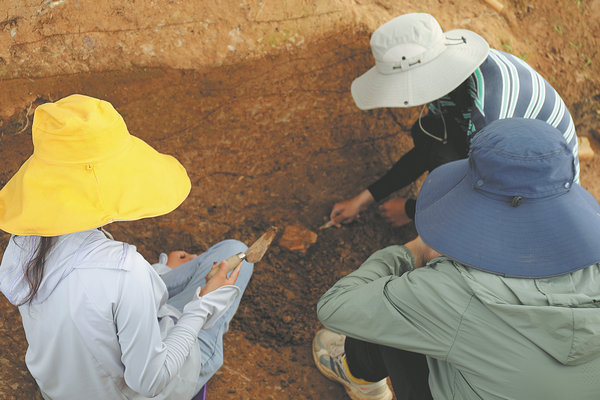Discovery sheds light on early rice cultivation
Evidence unearthed indicates elaborate system to produce crops, Wang Ru reports.
By Wang Ru | China Daily | Updated: 2024-09-28 10:11

Around 10,000 years ago, as people in present-day West Asia began to domesticate wheat and barley, a similar development took place in China where people began to cultivate rice. This marked the emergence of rice agriculture, which has had a profound influence on people's lives in various parts of the world ever since.
For years, Shangshan Culture, a Neolithic culture from 11,000 to 8,500 years ago in the Jinqu Basin in the middle and western part of East China's Zhejiang province, has been widely recognized as a source of rice agriculture with many related relics found in its sites. A new discovery may add insights into the Shangshan people's rice domestication, announced by the National Cultural Heritage Administration in Beijing on Sept 13.
The Huangchaodun Site, dating back 9,300 to 8,000 years in Quzhou, Zhejiang, recently unveiled remnants of settlements surrounded by a moat. More importantly, an area to the east of the settlements, covering 15,000 square meters, is possibly the earliest rice field ever discovered with a dense distribution of rice phytoliths, or remains of rice, according to Zhang Sen, a researcher with the Zhejiang Provincial Institute of Cultural Relics and Archaeology.
Zhou Dongya, a member of the archaeological team, told Zhejiang Daily that only fields that have been cultivated with rice will leave behind a large amount of phytoliths. Archaeologists have found that the field has an extremely high density of rice phytoliths, which are distributed in independent blocks, suggesting this was a land where early settlers had cultivated rice.
























